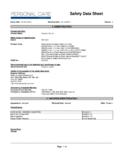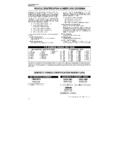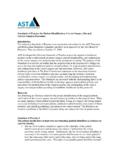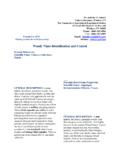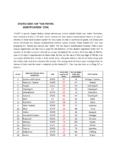Transcription of Unit 3: Project Identification, Formulation and Design
1 Unit Three: Project identification , Formulation and Design Unit Information 3 Unit Overview 3 Unit Aims 3 Unit Learning Outcomes 3 Key Readings 4 Further Readings 5 References 5 Project identification tools 6 Section Overview 6 Section Learning Outcome 6 Project identification 6 Stakeholder analysis 8 Problem analysis 9 Objectives 11 Section 1 Self Assessment Questions 12 Conceiving alternative solutions 14 Section Overview 14 Section Learning Outcome 14 Opening up the alternatives 14 Section 2 Self Assessment Question 18 Logical framework analysis 19 Section Overview 19 Section Learning Outcome 19 Introduction 19 Project Design : details of the Logframe approach 25 The vertical logic: means-ends relationships 29 The horizontal logic 31 Assumptions and risks: the external Project environment 32 Section 3 Self Assessment Questions 36 Analysis of factors affecting sustainability 37 Section Overview 37 Section Learning Outcome 37 SWOT analysis and Project sustainability 37 Section 4 Self Assessment Questions 39 P534 Project Planning and Management Unit 3 SOAS CeDEP 2 Implementation planning work plans 40 Section Overview 40 Section Learning Outcome 40 Preparing work plans 40 Section 5 Self Assessment Questions 44 Unit Summary 45 Unit Self Assessment Questions 46 Key Terms and Concepts 50 P534 Project Planning and Management Unit 3 SOAS CeDEP 3 UNIT INFORMATION Unit Overview This unit focuses upon the identification , Formulation , and Design stages of the Project cycle.
2 It provides guidance regarding setting Project objectives and reviewing alternative approaches to solve a given development problem. It emphasises the involvement of stakeholders from the outset of Project identification . A logical framework ( Logframe ) is introduced as a tool for Project Formulation , appraisal and management. Other tools are introduced for assessment of sustainability and for planning implementation. Unit Aims To provide background information and tools to guide Project identification and Formulation . To emphasise the importance of sound selection of alternative means at the early stages of the cycle. To explain how sound choice can be guided by using tools such as Logframe analysis. To demonstrate how Project elements can be clearly specified and risks assessed and reduced.
3 To set out how to link logical Project Design to work planning and budgeting. Unit Learning Outcomes By the end of this unit, students should be able to: grasp the main issues and questions in Project identification , Formulation , and Design understand the processes to follow in formulating projects to identify problems for primary stakeholders and set appropriate Project objectives ensure that both alternative approaches and alternative means of implementation are fully considered and appropriate choices made in selecting the best means of achieving given objectives know how to formulate logically consistent projects and to specify the key Project elements in a clear and precise way identify, assess, and reduce Project risks translate a Project Design in to implementation tools, particularly work plans Unit Interdependencies This unit makes use of concepts and terms introduced in Unit 2.
4 In turn it introduces the concepts of Logframe analysis which are also used in Unit 10. Otherwise, this unit can be studied largely independently of the rest of the module. P534 Project Planning and Management Unit 3 SOAS CeDEP 4 KEY READINGS Belli P, Anderson JR, Barnum HN, Dixon JA, Tan J (2001) An overview of economic analysis. In: Economic Analysis of Investment Operations: Analytical Tools and Practical Applications. The World Bank, Washington DC, pp. 1 7. This short chapter provides an overview of Project analysis and considers some of the questions that need to be answered during Project identification , including questions relating to sustainability, who benefits, and the importance of considering alternatives. It is of relevance to the whole of this unit. Dearden P, Kowalski B (2003) Programme and Project cycle management (PPCM): lessons from south and north.
5 Development in Practice 13(5) 501 514. This provides a critique of logical frameworks and highlights the importance of thinking beyond the framework. It stresses the importance of a broader knowledge of programme and Project cycle management by stakeholders involved. It also emphasises the value of treating the Logframe as a living document . DFID (2003) Logical frameworks. In: Tools for Development: a Handbook for those Engaged in Development Activity. UK Department for International Development (DFID), pp. Available from: This provides more detail about how to develop Logframes, their advantages and limitations. It outlines key steps in developing a Logframe including the key components of goal, purpose, outputs and activities, how to define indicators and analysing risks and assumptions.
6 Potts D (2002) Project identification and Formulation . In: Potts D Project Planning and Analysis for Development. Lynne Reinner Publishers, London. pp. 23 46. This chapter provides further background into Project identification , Formulation , and screening. It also succinctly explains with examples the tools described in this section stakeholder analysis, objectives analysis, alternatives analysis, and the Project framework, and it presents a useful diagram of a problem tree. P534 Project Planning and Management Unit 3 SOAS CeDEP 5 FURTHER READINGS DFID (2003) Stakeholder analysis. In: Tools for Development: a Handbook for those Engaged in Development Activity. UK Department for International Development (DFID), pp. DFID (2003) Problem and situational analysis. In: Tools for Development: a Handbook for those Engaged in Development Activity.
7 UK Department for International Development (DFID), pp. Available from: World Bank (2005) The Logframe Handbook: a Logical Framework Approach to Project Cycle Management. The World Bank, Washington DC. Available from: REFERENCES DFID (2003) Logical frameworks. In: Tools for Development: a Handbook for those Engaged in Development Activity. UK Department for International Development (DFID), pp. World Bank (2005) The Logframe Handbook: a Logical Framework Approach to Project Cycle Management. The World Bank, Washington DC. P534 Project Planning and Management Unit 3 SOAS CeDEP 6 Project identification TOOLS Section Overview This section introduces Project identification and the importance of setting appropriate objectives. It provides guidance and tools concerning stakeholder analysis, problem analysis, and objectives setting.
8 Section Learning Outcome By the end of this section, students should be able to: know the processes to follow in formulating projects to identify problems for primary stakeholders and set appropriate Project objectives Project identification The five major stages of the Project cycle are identification , preparation, appraisal, implementation and evaluation. The first two stages are largely the responsibility of government, which may intend to finance a Project from its own resources or to seek external assistance, though donor agencies may play an influential role. Viewed as a technical process identification involves, in the following sequence Preliminary stakeholder analysis Problem analysis Setting of objectives Analysis of alternatives Accountability analysis Logical framework thinking Analysis of assumptions and associated risks Progress indicator definition Stakeholder review It can be powerfully argued that this is the most critical stage of the cycle.
9 If the potential of the most viable concepts are overlooked at identification there is little prospect that they will be retrieved at a later stage, when the emphasis shifts from examining options to filling in the details of a specific proposal. It can be costly and difficult to abort or radically revise the preparation of a Project once underway. Economists often think in terms of resources, opportunities, and constraints, and this provides an analytical framework with which to generate Project ideas. , below, illustrates this and the wide range of possible sources for Project concepts. P534 Project Planning and Management Unit 3 SOAS CeDEP 7 Project identification In practice, Project ideas often result from the identification of a discrete set of activities identified as important within programme-based activities, a country s poverty reduction strategy and/or sector-wide approach problems or constraints in the development process caused by shortages of essential facilities, services, and material or human resources and by institutional or other obstacles unused or underused material or human resources and opportunities for their conversion to more productive purposes.
10 Or, conversely, overused natural resources that need to be conserved or restored unsatisfied demands or needs and possible means to meet them including opportunities arising from new technology or technological development, for example, the internet and mobile telephony the need to complement other investments (such as providing railway and port links for a mining Project , transport, packing and marketing facilities for an agricultural development Project , or access roads for a sugar factory and bio-ethanol plant) Project ideas may also emanate from initiatives by local private or public entrepreneurs who wish to take advantage of opportunities they perceive or who are responding to government incentives community initiatives (often supported by national or international NGOs) a government response to local political or social pressures originating, for example, from economic, social, or regional inequalities a need for advocacy aimed at government in a weak policy environment the pursuit of national objectives such as food security the occurrence of natural events (drought, floods, earthquakes)










